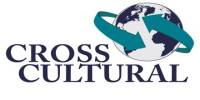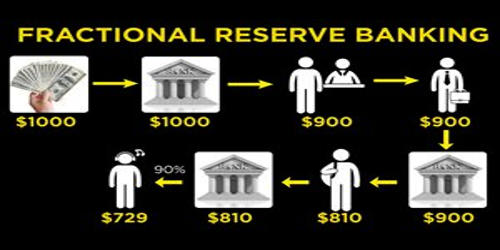International business
For many years, expansion outside the home market followed the conventional model of the multinational corporation for which the parent company set subsidiaries to handle its business in foreign markets. Though diverse from industry to industry and from company to company, these unprecedented corporate reorganizations have led to a new form of international business organization: the global corporation characterized by the large size of its organization and the small size of its production operations. As such, the global corporation is a network of independent subsidiaries, affiliates, and multi corporate alliances formed for the purpose of gaining competitive advantages in global industries: the development of complex products, the distribution and marketing of similar products in mature markets, and entry to emerging markets. Globalization has created a whole new market game for international business that dictates new forms of coordination. To be functional and efficient, the global corporation must be organized as an informal and vague organization, a web, a network of entrepreneurs who pursue the goals of the organization both independently and jointly and who share the risks and rewards of its operations.
Vision
The global corporation’s vision should include a sound code of ethics that defines the conduct of its internal and external affairs and ties its members to the corporation’s goals. Although the terms multinational corporation and global corporation are often used synonymously in describing a corporation’s expansion beyond its home market, they have their own distinct characteristics, making them suitable organizations for different business environments. Over time, the term multinational corporation came to describe an international business organization of corporate colonialism in which the parent company treats each national market as a separate market, setting up subsidiaries to handle its entire product and business lines in each of those markets. In this hierarchical organization, subsidiaries are restricted to trading directly with affiliates other than the parent that makes all major decisions regarding production, marketing, distribution, financing, and new product development. In this sense, the multinational corporation model is suitable for corporations in industries confronting a fractured multinational market. Multinational Enterprise (MNE) is the key actor on the stage of international business. It is the organization which leads globalization and it operates as the flagship firm for sets of regionally based business networks and clusters. The MNE interacts with governments but is not powerful enough to pursue a separate agenda of world economic domination. Instead, the reality of regional triad power is that MNEs need to compete for market share and profits. International business focuses on topics relating to the operations of firms with interests in multiple countries. International business is a primary determinant of international trade. The increasing success of international business ventures is globalization. International businesses have subsidiaries or joint-ventures in each national market. The subsidiaries link the business to its client from another location.
The educational toy company
Toys, games, and media are merging entertainment, information, education, and play. Although traditional toys and play have not lost their appeal, technology is increasingly applied to the pursuit of pleasure. And pleasure in the form of computer-mediated activities and games is increasingly applied in the pursuit of more purposeful goals such as education in the form of edutainment or, more directly, as educational toys and computer games. Toys, games, and media today are increasingly enmeshed in webs of integrated marketing which depend on what marketers call the synergy between different types of products. Books, movies, and TV shows are tied in with games and with toys of many kinds, ranging from the plastic models contained in fast-food happy meals to the more elaborate and expensive interactive toys. Children play with the toys and games that had amused children through the centuries balls, hoops, kites, marbles, stilts, tops wooden horses, and a cup-and-ball game. Toys were either made at home or produced as a sideline by ordinary tradesmen. They were usually individually handmade, and to order, from wood, clay, or metal (Rubinstein 2000).
Background of LEGO
Whittling, that is, shaping a piece of wood by slowly paring it with a knife, was almost a national pastime. Some consider it folk art. Milton Bradley, a toy maker from Springfield, Massachusetts, saw toys as a means of teaching the child through play. He viewed play as the child’s equivalent of the adult job. In 1861, he began developing child oriented toys for kindergartens. Craftsmen and skilled mechanics applied their skills to the design of toys; they were produced in quantities never dreamed of before and some at prices that even factory workers could afford. Street vendors often sold them. Having cars and engines that really worked introduced children to the identity of privilege; it introduced the children the reality of what Mark Twain called the Gilded Age. Toys made of materials such as tin, lead; leather, rubber, and wood were affordable (Rubinstein 2000). One company under the toy industry is Lego. LEGO is one of the world’s leading brands within the toy industry. The company’s famous LEGO bricks have been played with by generations of children, and the company now has in excess of 10,000 employees worldwide, as well as annual sales of approximately $1 billion. In recent years, LEGO has been under severe pressure to change its strategic direction. Statistically, children do not play as much as they used to. This apparently sad fact illustrates the need for LEGO to innovate. Apparently, using computer software does not equal playing in statistical terms (Drejer 2002). Thus, the market for toys is shrinking in these years. However amusing, this goes to illustrate the need for LEGO to rethink its products and the concept of children’s play the latter being close to the heart of the mission statement of LEGO. Over the last 15 years, the products of LEGO have slowly begun to change. First, products became pre packed in kits with one or two generic solutions, rather than just being bricks that can be used to build anything. Later on the idea of pre packed products was developed even further into products that did not resemble or even use the traditional LEGO bricks but seemed to compete with Playmobil or Barbie dolls (Drejer 2002).
Sourcing
The Lego Group dealt with an astonishing array of suppliers, more than 11,000 in all. That’s nearly twice as many suppliers as Boeing uses to build its airplanes. The numbers had crept up gradually over the years, as product developers sought new materials. Each engineer had his or her own favorite vendors, and the company’s lack of procurement compliance procedures allowed the engineers to form ad hoc relationships with suppliers — a practice that grew more problematic as the group expanded into new businesses.
These sourcing practices led to incredible waste. A new design might call for a unique material, such as a specially colored resin, that sold in three-ton lots. It might take just a few kilos of the substance to produce the new toy, but the company would be stuck with €10,000 ($13,500) worth of resin it would never need. Ordering so many specialized products at irregular intervals from a large number of vendors left the Lego Group’s procurement staff powerless to leverage the company’s scale in dealing with suppliers.
Manufacturing
As was the case with sourcing, the Lego Group gained limited advantage from its scale in the way it organized its production facilities. The company ran one of the largest injection-molding operations in the world, with more than 800 machines, in its Danish factory, yet the production teams operated as hundreds of independent toy shops. The teams placed their orders haphazardly and changed them frequently, preventing operations from piecing together a reliable picture of demand needs, supply capabilities, and inventory levels. This murkiness led to overall capacity utilization of just 70 percent.
In such a fragmented system, long-term planning can be exceptionally difficult. Day-to-day operations were often chaotic. Operators routinely responded to last-minute demands, readily implementing costly changeovers. That the Lego Group’s production sites were located in such high-cost countries as Denmark, Switzerland, and the United States put the company at a further disadvantage.
Distribution
The Lego Group paid as much attention to the thousands of stores that together generated only one-third of its revenue as it did the 200 larger chains that accounted for the other two-thirds. Without clearly defined service policies, the company spent a disproportionate amount of time and effort serving small shops, which drove up the costs of fulfillment substantially. Sixty-seven percent of all orders consisted of less than a full carton — an incredibly costly proposition that demands labor-intensive “pick-packing” at the distribution center. In addition, to serve its many small customers, the Lego Group had developed a multiple-tier inventory system with local centers; it was very difficult to position the right product in the right distribution center, a challenge that contributed to missed sales and high inventory levels.
Lego to move operations
Lego said, most toys today are produced in countries where production costs are low, mainly in Asia.
- Lego Group, the Danish toymaker, has said it will shift production from Denmark and the United States to lower-cost countries, resulting in about 1,200 layoffs.
- At Lego’s headquarters in Denmark, as many as 900 production employees will lose their jobs over the next three years, with nearly a third of the domestic output moving to the Czech Republic.
- Production now done in Enfield, Connecticut, will be moved to Mexico, the group said, resulting in 300 manufacturing layoffs. The distribution site in Enfield will also be affected.
- Some Lego products, including the popular Technic and Bionicle toys, will still be made at Lego’s headquarters in Billund, Denmark, which has a work force of 3,000.
- Production of basic Lego bricks is to be shifted to Flextronics, an electronics manufacturer based in Singapore that operates factories in Mexico and Eastern Europe.
- Flextronics will also take over Lego’s factory in Kladno, Czech Republic
- In 2005, the privately owned group had a net profit of 505 million kroner, or $86 million, reversing a net loss of 1.93 billion kroner in 2004.
- Lego said that it was considering moving all or part of its production to Eastern Europe or China and that the restructuring could affect all of its production sites.
- A month later of this, Lego announced that it was closing a manufacturing base in Switzerland and five European distribution centers and moving those operations to the Czech Republic. That move affected 540 workers.
- In 2005, the company sold its four Legoland amusement parks, which are in Denmark, Britain, the United States and Germany.
PESTLE analysis
Political
Lego made sure that they were aware of the political situation of the domestic market they have operated in and the industry has made sure that it has a reasonable position with regards to political issues. Lego and other educational toy companies are continuously prepared for any problems concerning the political sector. Unless the political environment will change rules that relate to their operations, Lego and other educational toy companies prefers to stay away from such subject. The political environment has allowed the liberation of the market, liberation of the market paved the way for improvement of products.
Economic
Lego and other educational toy companies can be said to be economically stable for the past years. Its economic stature is doing well that’s why they try to improve their products to give the best to their clients. It is not only the internal economic situation of the industry that should be taken note of but also the economy of the domestic market. Lego and other educational toy companies check first the economic status of the market they are operating in. The economy of the US domestic market has given opportunities to Lego and other educational toy business. The status of the economy has paved the way for Lego and other educational toy companies to prosper in the region and help in proving that the domestic market is one the premier region that houses the industry.
Social
The social environment serves as the conscience for Lego. This environment ensures that the Lego will not do things they know can ruin the industry’s reputation with the society. The society ensures that Lego will consider first its environment before making any decisions. Lego and other educational toy companies make sure that the products they offer will be accepted by the public. Lego tries to minimize the creation and delivery of some products they know will cause outbursts or complains from different groups in the society. Lego makes sure that they have a very good relationship with different sector in the society although some sectors hold a grudge towards them. Lego and other educational toy companies also engage in social activities that tend to develop a better relationship between them, the clients and the society they are operating in.
Technological
The technological forces dictate the trends in the toy industry; these forces are the one that determine what should be used to create a product. Lego offered new innovations in its technological aspect and introduced new concepts with regards to its industry. It has moved away from the use of wood as its materials instead it focused on plastic and other newer technologies. Since technology rapidly changes Lego makes sure they are updated to what is happening and they can adjust to these changes. If other industries use new technologies to create products; Lego tries to use technology in competing with such technologies.
Legal
The legal forces in the domestic market try to make sure that there is fairness in terms of laws in that region. The legal forces of domestic market can create changes in the way business is done by Lego. Lego and other educational toy companies make sure that they follow the different laws of the market they engage transaction in. Lego don’t want to risk their client’s welfare and the industry’s image by breaking local and international laws. Lego makes sure that the transactions they engage in will have a legal basis and will be sanctioned by local or international legal organizations.
Environmental
In knowing the environment better, industries use demographic data. Demographic data helps the industries to decide regarding how their product will be made so that clients can appreciate it. It will help in deciding on how a product should be changed to meet the demands of the region and a certain market. The demographic data is used to check for the need of the domestic market and what are the needs of certain groups of the environment. Lego and other educational toy companies make sure that the products they sell are proven to cause minimal problems to the environment. Lego puts up certain regulations on what type of product they will sell. Lego and other educational toy companies have also introduced better waste management strategies that aim to reduce pollutants and create a cleaner environment for the future. The toy industry makes sure that its waste system is organized to prevent any mistakes from the personnel.
Porter’s five forces
Potential Entrants
Lego has been around for a quite some time and the company is not greatly affected by the new entrants. The influence of potential entrants to the company is weak. Any new entrant will have difficulty in gaining clients not unless they can provide innovative strategies that can thwart Lego from its position and get the company’s clients. The services offered by Lego is unique in terms of appearance if any new entrant want to compete with Lego’s products they need to have a huge investment to create products that have the same caliber as Lego’s products. They also need to make use of better strategies that will give them an instant brand identity.
Competitive rivalry
Competitive rivalry has a low influence on Lego. The company has lower concerns on its competitors since there are limited competitors in their industry. The competitors cannot give much problem to the company since it already acquired a good percentage of the buying public.
Substitutes
Substitutes give high influence to Lego since substitutes can make a company lose the clients it has. The substitutes can be in the form of video games or the internet games. Lego makes sure that the substitutes won’t give them much problem. They do this by proving that the service they offer and the technologies they use to provide the service are better than substitutes.
Bargaining power of buyers
The bargaining power of buyers highly influences Lego and other educational toy companies. It shows how the industry tries to create good relationships with clients. As much as possible the company maintains reasonable prices for their services. They also have promos that intend to make the clients have second thoughts on purchasing products from other companies. When the market try to dictate lower prices Lego tries to know whether it is reasonable. Lego and other educational toy companies sees to it that a big part of decisions on prices will be based on suggestions of the clients. For Lego the bargaining power of its buyer is gradually increasing as they are more and more similar types of products and services available in the market.
Bargaining power of sellers
The bargaining power of sellers highly influences Lego. The company makes sure that their suppliers have high bargaining power through helping them show their importance in the industry. Lego and other educational toy companies make sure that the price being asked for a material has the same value as the same materials’ quality. This will ensure that budgets will not be wasted. Lego makes sure that they are aware of its partnership with its services partners. Lego and other educational toy companies have to make sure that every part of the agreement with the partners will be followed. Any adverse changes or violations in the partnership agreement will incur a certain amount of risk to Lego and other educational toy companies.
LEGO FINANCIAL HIGHLIGHTS (2004-2008)
Competitors Analysis
Taking the time to look critically at and understand competitive advertising has been among the most effective ways to leverage means-end research into an effective communications strategy that builds on strength, stresses defensible points of distinction, and reframes the consumer decision-making process in a way that creates competitive advantage. Segmentation divides a heterogeneous marketplace into smaller and more manageable homogenous components. These smaller market segments can be targeted with more personally relevant positioning strategies that have greater appeal to individuals within the group. Today’s winning companies have been among the first to accentuate their distinctiveness by adopting customer-based marketing and positioning strategies. Such strategies help managers deal with their growing uncertainty regarding how to position a product and develop an action plan that will retain and cultivate established customers, and in some cases, attract market segments. Competitors for Lego include Hasbro and Mattel. Hasbro is considered to be one of the largest toy makers in the world, second only to the toy giant Mattel. Hasbro is also the creator and distributor of the world’s most popular board game, Monopoly. Hasbro has several brands of toys and games aimed at different demographics. Hasbro has often touted the safety of all its products, claiming they are lead free and that they exceed government safety standards. Mattel is known as the world’s largest toy importing company based on revenue. The products it imports include Barbie dolls, Hot Wheels and Matchbox cars, American Girl dolls and some board games.
Optimistic and Pessimistic Scenario
Optimistic future scenarios for the industry
An optimistic future scenario for Lego and the toy industry is stable sales and maintained clients even if there are newer technologies for kids and teens. In this scenario Lego maintains its profit and income rates even if there are substitutes like video games and their consoles. Another optimistic future scenario for Lego is the increase in sales of their highly advanced toys. In this scenario Lego has produced highly advanced toys and it became a tough competition for video games. Moreover an optimistic future scenario for Lego is better use of safe and non-toxic materials.
Pessimistic future scenarios for the industry
A negative scenario for Lego and the toy industry includes the proliferation of more video games and video game consoles; this will lead to lower sales and possibly the lesser need for toys.
FUNNY LOGO FACTS
• More than 400 million children and adults will play with LEGO bricks this year
• LEGO products are on sale in more than 130 countries
• If you built a column of about 40,000,000,000 LEGO bricks, it would reach the moon
• Approx. seven LEGO sets are sold each second
• Approx. 19 billion LEGO elements are made every year in Billund – equivalent to approx. 2m elements an hour or 36,000 a minute.
• If all LEGO sets sold in a year were stacked on top of each other, they would fill a football field to a height of 77.8 m
• Laid end to end, the number of LEGO bricks sold in a year would reach more than five times round the world
• On average there are 62 LEGO bricks for every person on earth
• Since BIONICLE figures first appeared in 2001, more than 150 million BIONICLE “beings” have been born. That’s more than the population of France and Britain put together
• The eight robots and 15 automatic cranes that work in the LEGO warehouse in Billundcan shift 660 crates of bricks in and out every hour
• The world’s children spend 5 billion hours a year playing with LEGO bricks
•With a production of about 306 million tyres a year, the LEGO Group is the world’s largest tyre manufacturer
•In the manufacture of LEGO bricks the machine tolerance is as small as 0.002 mm
•The LEGO Club has 2.7 million members worldwide
•Approx. 440 billion LEGO elements have been manufactured since 1949.
















